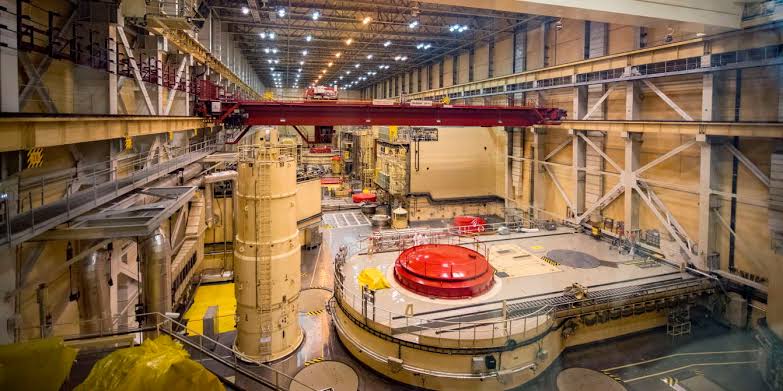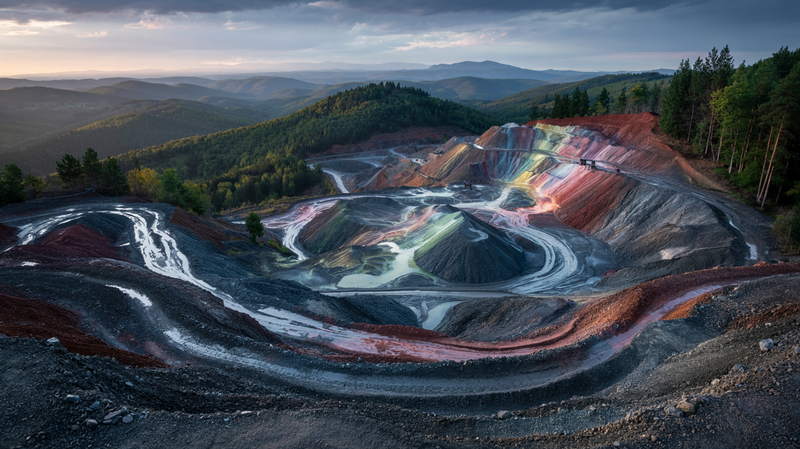Caught in a Nuclear Web: The Paradox of U.S. Dependence on Russian Uranium
The global nuclear industry is rife with political intrigues, evident by the deep entanglement of the United States and Russia's nuclear programs. This connection becomes all the more ironic considering the frosty relations between these two global powerhouses. At the heart of this enigma lies a surprising dependency

The global nuclear industry is rife with political intrigues, evident by the deep entanglement of the United States and Russia's nuclear programs. This connection becomes all the more ironic considering the frosty relations between these two global powerhouses. At the heart of this enigma lies a surprising dependency of the U.S. on Russian enriched uranium for its nuclear power needs.
According to reports by The New York Times and Insider, the U.S. pays approximately $1 billion each year to Rosatom, Russia's state-owned nuclear agency. This substantial sum contrasts starkly with the White House's pledge to cripple Russia's economy following its controversial invasion of Ukraine.
Rosatom dominates the global nuclear supply chain, providing about 43% of the world's enriched uranium. For decades, the U.S. has been a major client of this nuclear giant. In fact, a third of the enriched uranium used in the U.S. is now imported from Russia.
Despite President Joe Biden’s promises to hobble Russia's economy in his State of the Union address, these payments continue unabated. The rationale behind this seeming contradiction is both economic and pragmatic. Russian uranium is cheap and readily available, making it a cornerstone of the U.S.'s push for emissions-free energy in the fight against climate change. The U.S.'s own uranium enrichment program has dwindled, leaving the country commercially tied to Russia in a bond that has proved hard to break.
Moreover, the U.S. is not alone in its dependency. Certain central European countries, still operating Soviet-era nuclear power plants, rely heavily on Rosatom to keep them functioning.
Yet, amid the well-documented financial ties between the U.S. and Russia, the nuclear fuel market has remained "below the radar" in terms of sanctions, as Antony Froggatt, deputy director of the London-based policy institute Chatham House, noted.
Efforts to decrease the U.S.'s dependency on Russian uranium have proven futile thus far. Despite the Biden administration allocating $700 million to bolster production at American facilities, they're still lagging behind. The U.S. facility in Ohio is yet to be completed, and the New Mexico plant is operating at half capacity. In contrast, Russia continues to expand its global nuclear reach, with Rosatom involved in numerous nuclear reactors' construction and maintenance worldwide.
Interestingly, despite sanctions on Russian oil, gas, and coal, enriched uranium imports remain unscathed, indicating the crucial role this commodity plays in the U.S. energy landscape. However, it brings to light the complex geopolitical situation that forces the U.S. to feed the very economy it seeks to weaken.
As the urgency for a clean-energy future amplifies, and with nuclear power playing a pivotal role, it's clear that the U.S. finds itself tangled in a complex nuclear web. While it pledges to develop nuclear fuel supply chains excluding Russia, the execution of such plans appears far more challenging than anticipated.
In conclusion, the paradoxical relationship between the U.S. and Russia's nuclear industry provides a stark reminder of the complexities underlying our global energy system, particularly as we grapple with the demands of a changing climate. For now, it seems the U.S. is tethered to the Russian “nipple,” a conundrum that calls for a delicate balance of politics, economics, and environmental stewardship.




